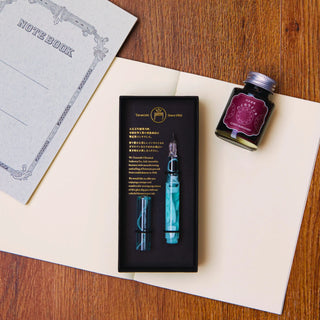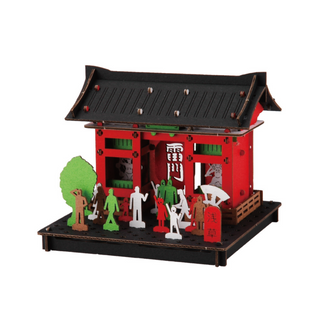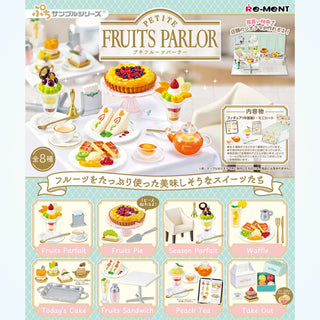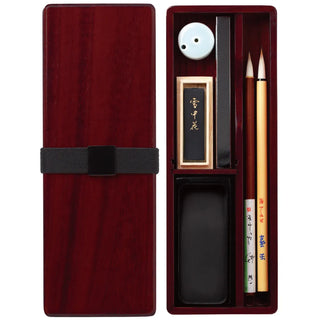For fans of Japanese stationery, the name Tombow is likely a familiar one, synonymous with quality, innovation, and timeless design. With a product lineup beloved both in Japan and around the world, Tombow has earned its place as a staple in the stationery community. In today’s blog, we’ll take a closer look at the brand’s rich history, the challenges it has faced, its approach to product development, and its role in bringing Japanese stationery to a global audience. By exploring Tombow’s story, we hope to deepen our appreciation for the craftsmanship behind their products and the dedication that goes into every item we use.
Tombow and the Dragonfly: A Cultural Connection
The name Tombow is derived from tonbo (トンボ), the Japanese word for dragonfly—a creature deeply rooted in Japan’s cultural heritage. The dragonfly in Tombow’s logo is more than a namesake; it embodies powerful symbolism. Traditionally, dragonflies represent courage, strength, and success. In modern times, the dragonfly has come to symbolize a harmonious ecosystem where nature and humanity coexist in balance. For Tombow, the dragonfly reflects both its proud legacy of craftsmanship and its ongoing commitment to a sustainable, forward-looking future.
A Century of Craftsmanship: The History of Tombow
Over the past century, Tombow has introduced a wide range of products that have solidified its reputation as a leader in the world of stationery. Since its founding in 1913, the company has remained a family-owned business, growing steadily into a global brand with thousands of employees worldwide. Let’s take a closer look at how Tombow has evolved over the years, from its early beginnings to the release of its most iconic products.
Tombow’s story began in 1913, when 28-year-old Harunosuke Ogawa, an experienced pencil manufacturer, opened a small stationery shop in Asakusa under the name Harunosuke Ogawa Shoten. Having previously worked at a wholesaler in Nihonbashi, Tokyo, Harunosuke had mastered the knowledge of traditional writing tools, known as the four treasures of writing: ink, brush, inkstone, and paper. His shop offered a curated mix of both traditional Japanese stationery and imported Western pencils, quickly earning a reputation for expertise and quality.
This period coincided with Japan’s rapid modernization in the early 20th century. The growing push for compulsory education and the introduction of English language instruction created a surge in demand for reliable writing instruments across households, schools, and offices. The company was formally incorporated in December 1939 as two separate entities: Tombow Pencil Manufacturing Co., Ltd. (for production) and Tombow Pencil Trade Co., Ltd. (for sales), marking the beginning of Tombow’s transformation into a full-fledged stationery brand.
Over the decades, Tombow has consistently expanded its reach and pushed the boundaries of product innovation, an evolution marked by a steady stream of product launches, key milestones, and strategic relocations that reflect the company’s long-term vision and adaptability. In October 1954, the company moved its headquarters from Yanagibashi in Taitō Ward to Nihonbashi Ningyōchō in Chūō Ward, reflecting its expanding operations. Then, in November 1968, Tombow relocated once again, this time to Toshima in Kita Ward, Tokyo, where its head office remains to this day.
Continuing its expansion, Tombow established the Tombow Ballpoint Pen Co., Ltd. in April 1973, solidifying its place in the growing market for writing instruments. This was followed by further internationalization and product diversification in the decades that followed, beginning with the launch of its European branch in Germany.
International Operations
Tombow's international expansion began in 1980 with the establishment of Tombow Pen & Pencil GmbH in Cologne, West Germany, its first European base. Just a few years later, in 1983, the company expanded into North America with the founding of American Tombow Inc. in Westlake Village, California. As demand grew, operations were relocated and expanded to Suwanee, Georgia, in 1992.
To increase global accessibility and manufacturing efficiency, Tombow launched its first overseas production site in 1990 with the establishment of Tombow (Thailand) Co., Ltd. in Bangkok. This was followed by the founding of Tombow Vietnam Co., Ltd. near Ho Chi Minh City in 2003, and the expansion into China in 2011. Most recently, in August 2019, Tombow opened a representative office in Jakarta, Indonesia, to support market research and sales promotion across Southeast Asia.
Inside Tombow’s Iconic Product Lineup
A look at Tombow’s historical timeline reveals a legacy defined by relentless product development and innovation. From the beginning, the company has poured its passion and expertise into creating high-quality, forward-thinking stationery that continues to shape the industry.
While their full product development history can be explored on Tombow’s official website, today we’re spotlighting some of the brand’s most iconic and standout release items that we carry in our lineup.
 Mono Series
Mono Series
Among Tombow’s many innovations, the MONO series stands out as perhaps the most iconic. Instantly recognizable by its signature blue, white, and black color scheme, minimalist typography, and bold MONO logo, the series has become a timeless symbol of Japanese stationery excellence.
The MONO brand was first introduced in 1963 with the launch of the high-end MONO drawing pencil, priced at 60 yen—a premium item at the time. The name MONO comes from the Greek word monos, meaning “only” or “unique,” reflecting the brand’s commitment to quality and singular craftsmanship. While the line has produced many products over the decades, none is more famous than the MONO eraser, introduced in 1969. Encased in its iconic tricolor sleeve, the design has remained unchanged for over 50 years. In recognition of its enduring popularity and impact, the MONO eraser received the Good Design Long Life Design Award in 2011, and in 2017, its blue, white, and black color palette became the first registered color trademark in Japan.
Building on the strength of this design identity, Tombow expanded the MONO line to include other writing tools, starting with the mechanical pencil in 2014, which later evolved into the wider range of stationery essentials like the MONO Graph Mechanical Pencil clever design, users can extend the lead simply by giving the pencil a gentle shake, making it a fun and efficient tool, MONO Graph Lite Ballpoint Pen the MONO Stick Eraser, and the MONO Tough all unified by the same dedication to quality, functionality and iconic design.
There are also other variants and color combinations that Tombow released under the MONO brand. To check them out, please view our Tombow Collection.
AirPress
Released in the year 2008, the Tombow AirPress is truly a unique product that was featured in our previous blogs and is slowly becoming a favorite of ours. The AirPress is an oil-based ballpoint pen with some additional flair. Featuring the AirPress System (APS), a unique mechanism that uses the air compressed with every click to eject the ink. Reliable performance is guaranteed even under difficult and unconventional conditions such as writing fast, writing with a pen nib up, and writing on wet paper. Inside the pen also has a Knock pressurization mechanism, where the piston inside the pen presses the compression chamber, and with each click, it sends compressed air to the refill (core) and ejects the ink. This technology allows this pen to be a reliable one in any situation.
Conclusion
Tombow's journey is one marked by tradition and innovation. From a humble stationery shop in Asakusa to a globally recognized brand, Tombow has continuously furthered stationery product innovation while staying true to its roots. Whether it’s the iconic MONO eraser, the cutting-edge Airpress pen, or their growing global presence, each product reflects a thoughtful balance between form, function, and cultural heritage.
As fans and collectors of Japanese stationery, understanding the stories behind the tools we use only deepens our appreciation for them. We hope this look into their history and iconic products inspires you to pick up your favorite Tombow item with a little more admiration the next time you write, draw, or plan.





























